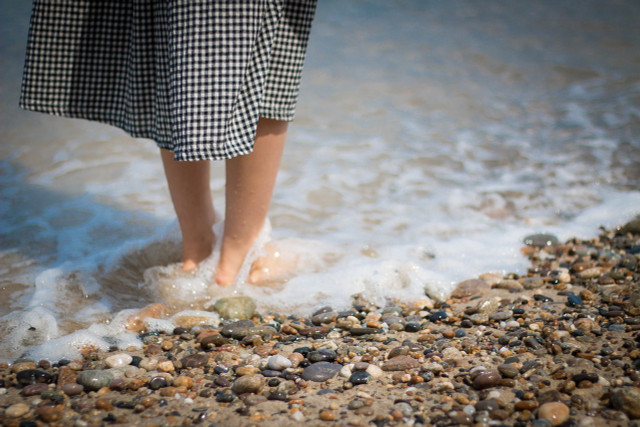
You should treat a weever sting quickly. Because the animal is an extremely poisonous fish and its sting is very painful. You can do that.
Behind the harmless-sounding name “Weever” there is a fish that is feared by many bathers on the Mediterranean, the Atlantic, the Black Sea and the North and Baltic Seas: Weever often buries themselves, especially during the spawning season in spring and summer near the shore until only the eyes can be seen. For swimmers, weevers are barely recognizable. Then a weever sting can quickly occur.
If you step on a weever, it can be very painful due to the poisonous spines on the fish’s back fin and gill cover. The sting’s venomous mixture, which includes serotonin and proteins, can cause severe swelling. According to the German Press Agency, around 30 to 40 stings occur on German coasts every year.
Weever sting: symptoms and consequences

(Photo: CC0 / Pixabay / jackmac34)
As the Bonn Poison Center writes, weevers are among the most dangerous European poisonous animals. When weever stings, you feel the pain immediately. Those affected describe the pain as similar to that of a strong wasp sting or the burning feeling when you step on a piece of glass barefoot.
In addition to swelling, blisters can also form on the skin. Further symptoms may include nausea, dizziness and even cardiac arrhythmias. In the worst case, an allergic shock can occur, which can even lead to death.
What should you do if you get a weever sting?
If you get a weever sting, you should behave as follows:
- Remove any stingers or weever tissue residue from the wound and disinfect it. For example, you can use tweezers to remove it.
- Then use the temperature shock method. The Schleswig-Holstein State Office for Health and Occupational Safety recommends holding a switched-on hairdryer in front of the affected area for about two minutes. The heat destroys the protein contained in the poison. You should then cool the area with ice or cold water. In an emergency, you can also hold the embers of a hot cigarette about a centimeter in front of the affected area.
- The state office advises against the often described treatment with hot water, as it can cause scalding. If you only have the option to treat the wound with hot water, you should make sure that it is at least 40 degrees. First test on another part of your body to see whether the temperature is bearable for you.
- No matter which application of temperature shock method you use, the heat treatment should last two minutes. Relief usually occurs quickly afterwards.
- You should then see a doctor as tetanus prophylaxis is necessary.
You often hear that the poison should be sucked out of the wound. However, this first aid measure is not recommended if a weever stings, as heat destroys the proteins in the venom.
Sting from Petermännnchen: This is how you can prevent it

(Photo: CC0 / Pixabay / criskang)
Even during the weever’s spawning season, you don’t have to avoid the beach when vacationing by the sea. A weever sting can be easily avoided with a few precautions:
- Wear bathing shoes. This is particularly advisable when hiking on the mudflats in the Baltic and North Seas, because the weever also likes to bury himself there. When on a beach holiday, bathing shoes not only protect you from poisonous stings, but also from sharp stones and rocks.
- When snorkeling, you should be careful not to touch the ground. Otherwise there is a risk of a weever sting.
Read more on Techzle\.com:
- Triggerfish bite bathers because the water is too warm
- Ghost nets in the seas: That’s how dangerous they are
- Get a jellyfish sting? This is what needs to be done now